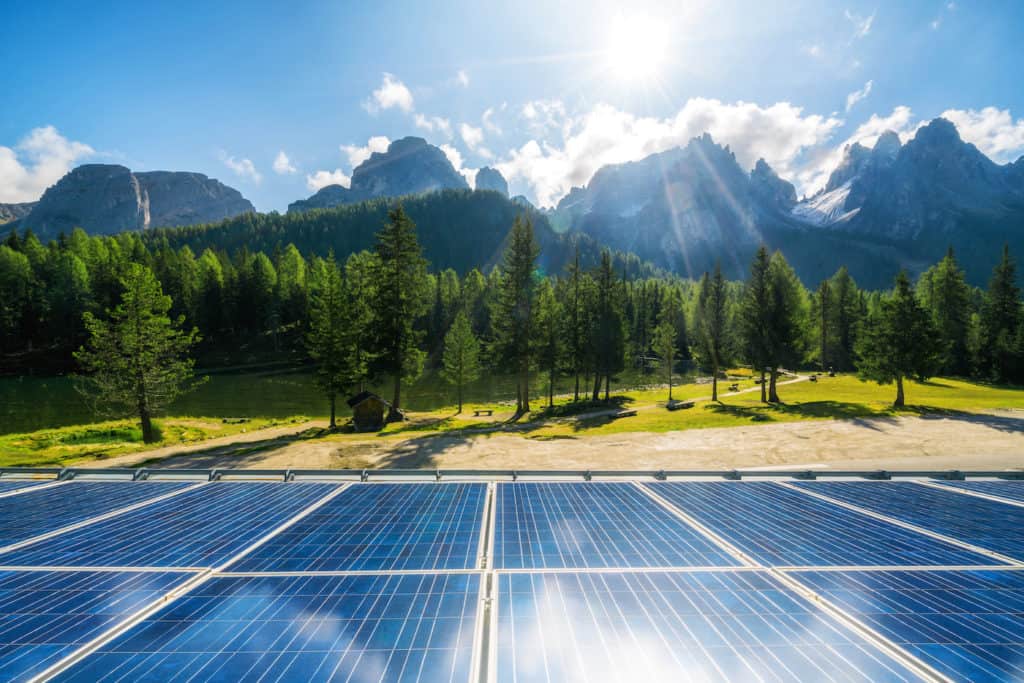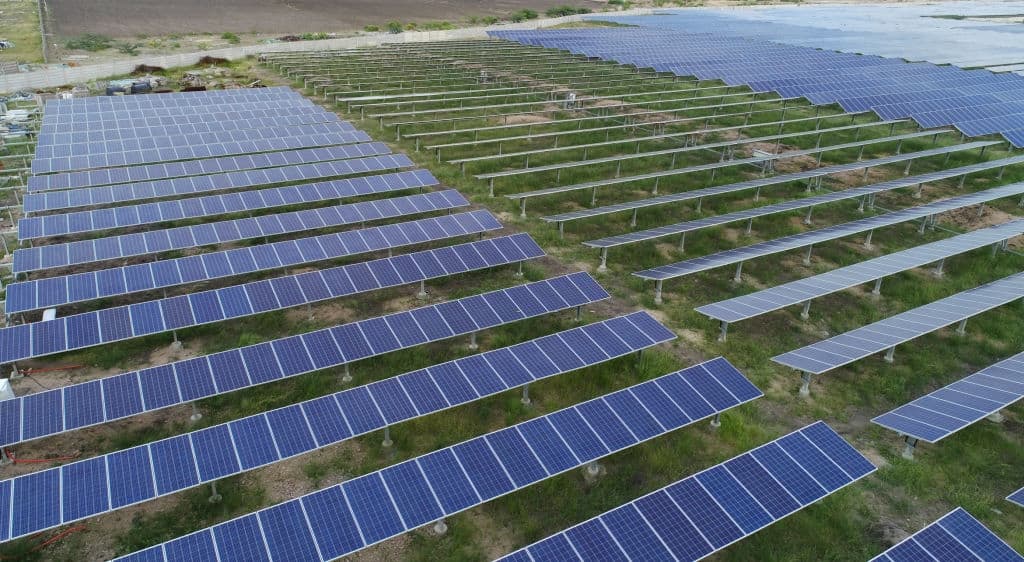Solar power is the most abundant energy resource on Earth, and it has huge potential. The United States has some incredible solar resources, and solar energy has never been better or more cost-effective than it is currently.
About Solar Power
What is Solar Energy?
Solar power is an energy solution that provides clean, reliable electricity, increases consumer choice, and helps home and business owners save money on their utility bills.
Solar energy is now the fastest-growing source of electricity in the world, the United States alone installed 29 GW of renewable energy sources in 2020, including 15 GW of solar. This is nearly an 80% increase on 2019’s figures! To see the extent of solar power’s potential, have a look at the Solar Energy Industry Association’s interactive map showing the project locations of the major solar projects in the U.S.


Utility-Scale Solar
A utility-scale solar power plant can be one of various solar technologies: concentrating solar power (CSP), photovoltaics (PV), or concentrating photovoltaics (CPV). Many utility-scale solar designs can also include built-in storage capacity that provides power even when the sun is not shining, like traditional power plants. Utility customers have repeatedly endorsed investments in utility-scale solar plants. Today, 1815 megawatts (MW) of CSP are in operation across the U.S.
The size of a project and the sale of the electricity generated to wholesale utility buyers, rather than end-use consumers, is what distinguishes utility-scale solar from distributed solar energy. Utility-scale solar plants are great for consumers because they offer fixed-priced electricity during peak demand periods when electricity from fossil fuels is the most expensive.
Across America, grand-scale photovoltaic plants are in operation, for example, California receives an impressive 14% of its electricity from solar. More solar power is on the way, too: as of Q2 2021, more than 17,428 MW of utility-scale solar power projects are under construction or in advanced development in the U.S. In 2021, utility-scale solar set a record for Q1 at 2.6GW (DC). An impressive 6.2 GW (DC) of new utility scale solar power projects were announced in Q1 of 2021, on par with 2020 figures. Estimates suggest this growth will continue as developers scope out projects.
Solar Energy Fun Facts
Benefits of Solar Energy
SOLAR AND THE ECONOMY
The U.S. solar industry is undeniably thriving. With costs continuing to decline and a huge project pipeline, solar power is capturing an ever-increasing share of new U.S. power generation. Renewable energies are expected to account for 70% of 2021’s total of 530 billion spent on new generation capacity, and solar is predicted to make up a large percentage of this figure. Major U.S. corporations, including Apple, Amazon, Target, and Walmart are installing solar at an incredible rate. As of October 2020, the top 25 corporate solar users in America have installed over 8300 MW of capacity across the country.
SOLAR AND JOBS
Luckily, the solar industry is a job creator. As of 2020, America has over 230,000 solar workers across 10,000 companies across all 50 states. With more utility-scale projects and new policy incentives in key states, solar jobs are expected to increase in 2021.
SOLAR AND THE ENVIRONMENT
The environmental cost of energy is something we should all be conscious of, and solar technologies offer numerous environmental benefits, including the reduction of greenhouse gas (GHG) emissions and waste in comparison to fuel-based energy sources. Climate change, sustainability, and recycling are all driving the popularity of solar power, as the lifecycle of solar products is much less damaging to the environment.
Solar energy is a renewable, carbon-free resource readily available across the United States. In 2020, solar energy generated enough energy to power nearly 19 million American homes and offset 122 million metric tons of carbon dioxide emissions.
Solar Energy Policy
FEDERAL INVESTMENT TAX CREDIT
The Solar Investment Tax Credit (ITC) has provided industry stability and growth since its initial passage in 2006. In the last decade, solar has experienced an average annual growth rate of 42%. Installations surged in 2016 ahead of the potential drop down of the ITC, but an extension in late 2015 has created federal policy stability through 2021. To learn more about the ITC and its impact on the solar industry, click here.
Solar Energy Economics
SOLAR IS COST-COMPETITIVE
New utility-scale solar energy projects are now often cost-competitive with new natural gas generation due to continuing technological innovation. As more people are investing in solar power, new solar projects are often cheaper than coal and natural gas, another incentive to choose this sustainable option.
SOLAR COSTS ARE CONTINUING TO DECLINE
The cost of solar power has declined 86% since 2009, and 99% since the 1970s. And as the technology continues to advance, the industry expects costs to further decline in the years ahead, as the figures have shown over previous decades. The following chart from the National Renewable Energy Laboratory shows the dramatic drop in solar prices over the last 9 years.
Solar prices are predicted to fall by 5% in 2021 thanks to decreases in component prices. Solar panels and solar inverters continue to improve technologically as more people choose to invest in them, meaning that now is a great time to invest in solar power.
Solar Installation By State
- Alabama
- Alaska
- Arizona
- Arkansas
- California
- Colorado
- Connecticut
- Delaware
- Florida
- Georgia
- Hawaii
- Idaho
- Illinois
- Indiana
- Iowa
- Kansas
- Kentucky
- Louisiana
- Maine
- Maryland
- Massachusetts
- Michigan
- Minnesota
- Mississippi
- Missouri
- Montana
- Nebraska
- Nevada
- New Hampshire
- New Jersey
- New Mexico
- New York
- North Carolina
- North Dakota
- Ohio
- Oklahoma
- Oregon
- Pennsylvania
- Rhode Island
- South Carolina
- South Dakota
- Tennessee
- Texas
- Utah
- Vermont
- Virginia
- Washington
- West Virginia
- Wisconsin
- Wyoming